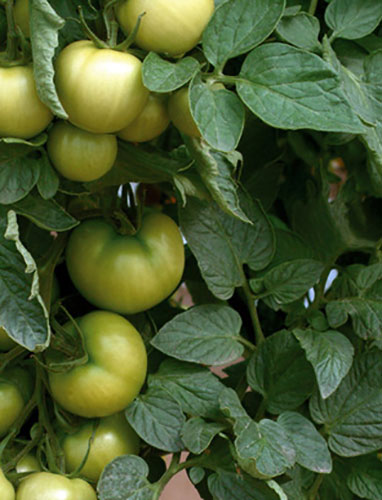Nutritional information
The Tomato is the most widely grown crop in the world. It is a very flexible crop being tolerant to salinity and high pH environments. The nutritional requirements of the plant vary depending on its growth stage this dictates the ratios of compounds and elements present in the fertilizer.
Nitrogen
Is the prime nutrient for plant growth Nitrogen deficiency is characterized by reduced vegetative growth and a chlorotic appearance. However nitrogen has to be applied with much care as over-dosing can cause excessive vegetative or “top” growth, early drop and late ripening of the crop. We recommend using low nitrogen products in situations where lush vegetative growth is occurring naturally. When leaf and stem growth is sparse high nitrogen products should be used.
Phosphorus
Has a direct effect on root system development, blossoming and fruit ripening.
Potassium
Very important in determining the qualitative properties of the fruits (colour, taste, disease resistance).
Magnesium
This meso-element is an important component of the chlorophyll molecule. Magnesium deficiencies can lead to a reduction in vegetative growth.
Calcium
Reduced intake of Calcium can cause a reduction in root system development and necrosis in the leaf.
When planning the fertilizer programme for tomatoes it is also important to consider the differences between crops used for industrial processing and the table. Within this last category varietal differences should also be taken into account eg. red cluster, cherry and salad tomato.






